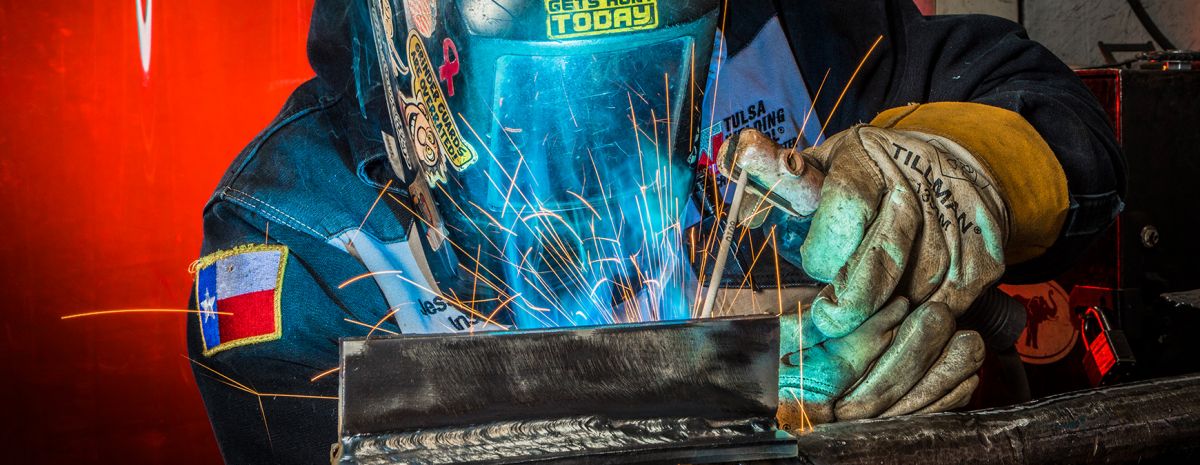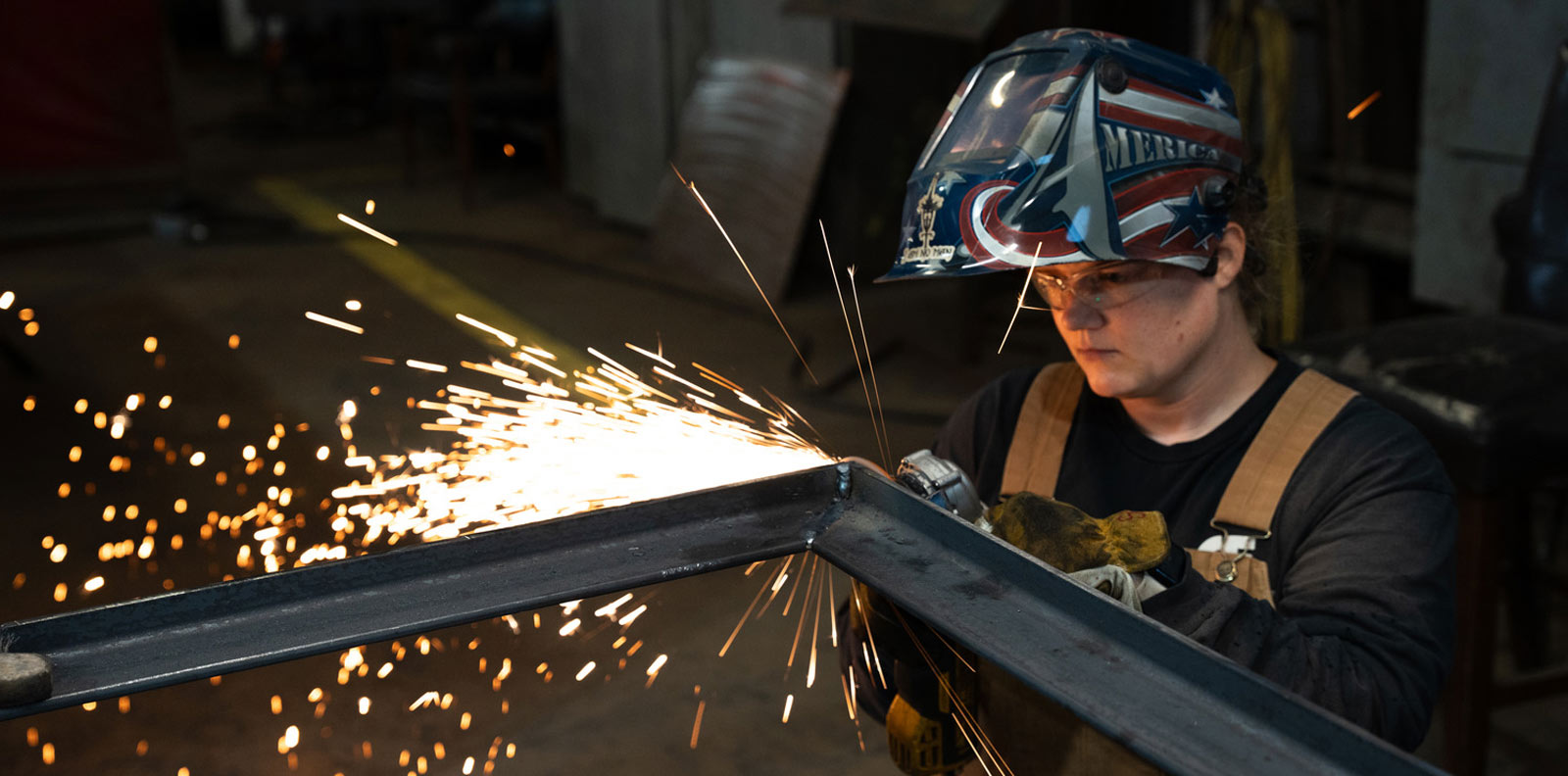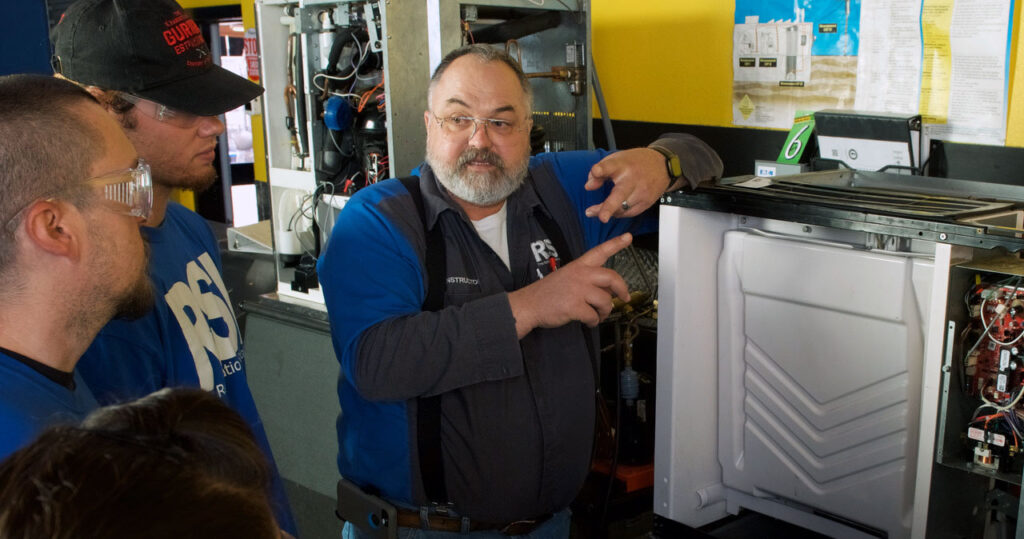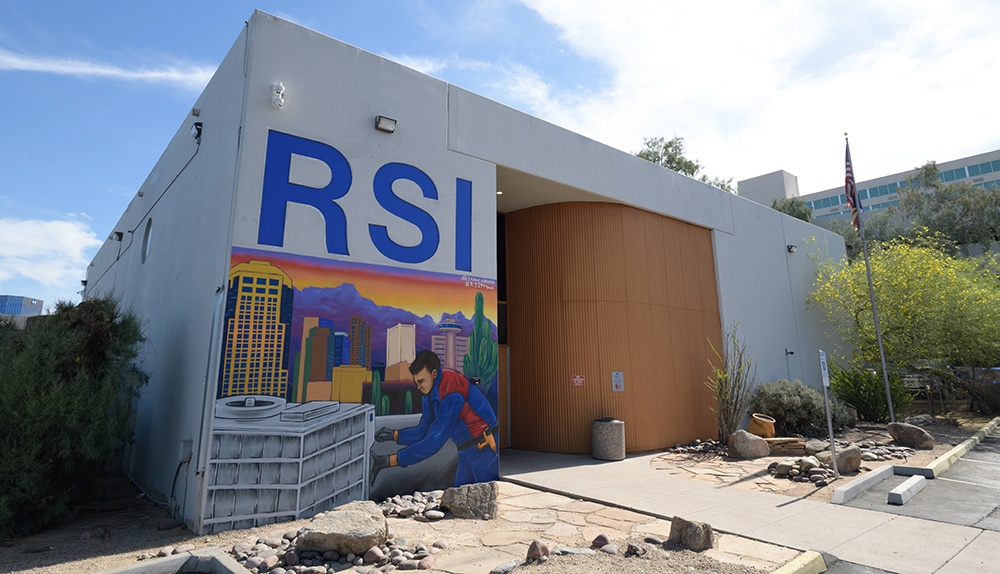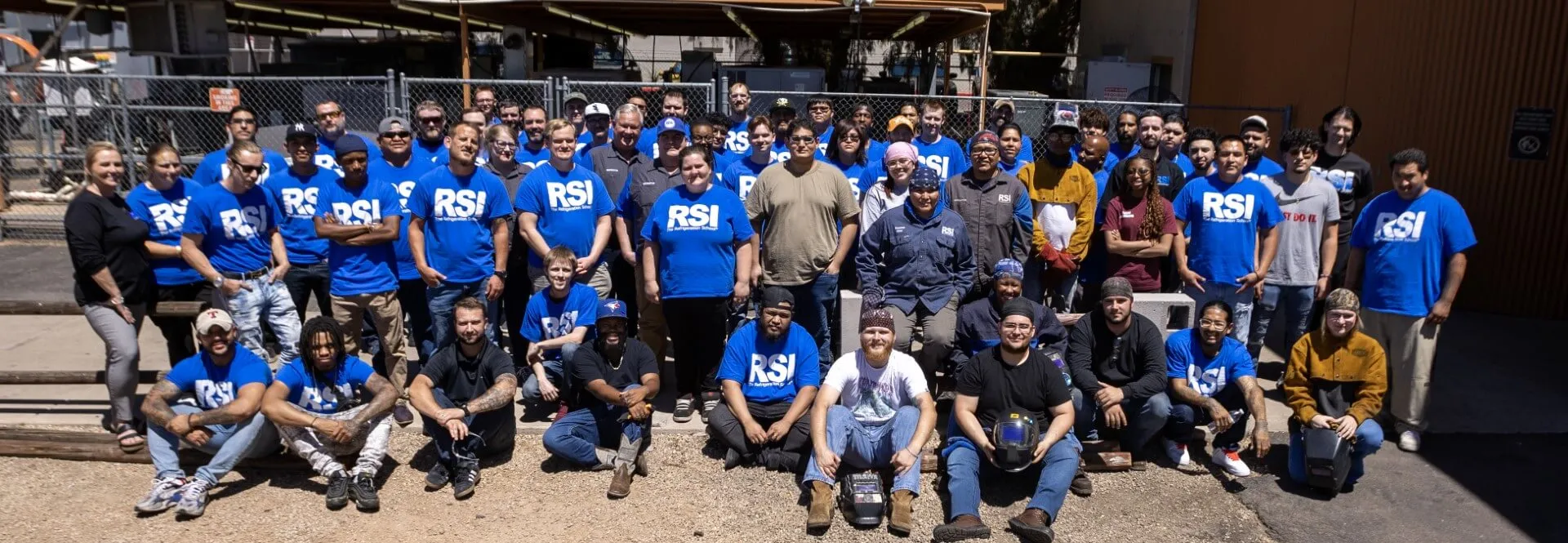RSI is a Great Training Option for Everyone
Learn more about how we can prepare you to advance your career.
Are you interested in learning welding and metal fabrication? You are in luck. The Refrigeration School (RSI) offers a Welding Specialist training program at our Phoenix campus. In as little as seven months, you can start an entry-level welder job and work toward your journeymen’s license. Are you wondering if welding is the same as metal fabrication?
Is Welding the Same as Metal Fabrication?
Metal fabrication is the entire manufacturing process used to make metal products and machines. Welding, cutting, bending, and assembling are all part of the metal fabrication process.
What is Welding?
Welding is a fabrication process that fuses two or more parts using heat and pressure. Different types of welding techniques include:
Gas Tungsten Arc Welding (GTAW or TIG) – the welding process uses non-consumable tungsten electrodes to deliver the current to the welding arc. The inert gas protects and cools the tungsten.
Gas Metal Arc Welding (GMAW or MIG) – the joining of two pieces of metal with an electrical supply to fuse the base metal to the consumable electrode filler.
Get Started on the Path to a New Career
Fill out our form to learn how we can help you change your life.
Flux Cored Arc Welding (FCAW) – uses heat from an electric arc to fuse the base metal with the continuously fed tubular cored consumable filler wire.
Shielded Metal Arc Welding (SMAW) – also known as stick welding, uses a metal stick held in an electrode holder connected to a power source. Electricity passes through the electrode and melts the metal into a joint.
What is Metal Fabrication?
Structures are created by welding, cutting, bending, or assembling metal materials. The process starts with the design phase, when drawings or blueprints are drawn to measurements. Then, the welding, cutting, bending, or assembling happens. Finally, the structure is installed.
What is Involved in the Metal Fabrication Process?
There are many different techniques for metal fabrication. These processes include:
Die-cutting – the manipulation of the size and shape of metal materials. The die-cutting process involves feeding, cutting, and stripping.
Finishing – this is the final step in the metal fabrication process to make the product resistant to corrosion and add an extra layer of durability.
Hydroforming – the shaping of metals that use highly pressurized fluid. It allows metal fabricators to form complex shapes.
Roll Forming – metal is passed through consecutive sets of rolls in the bending process until the cross-section profile is obtained.
Shrinking – heating up and then using cold water to shrink metal.
Spinning – transforming a flat circular metal block into axially symmetrical round shapes.
Stamping – placing a flat metal sheet into a stamping press to create the desired shape.
Stretching – the stretching and bending of metal to form a part with smooth and wrinkle-free curves.
Want To Learn More?
The welding certification path starts with enrolling in RSI’s Welding Specialist program. We offer hands-on training with classroom lectures to prepare you for entry-level structural, alloy, and pipeline welding job opportunities. To learn more, contact us.
Additional Sources
